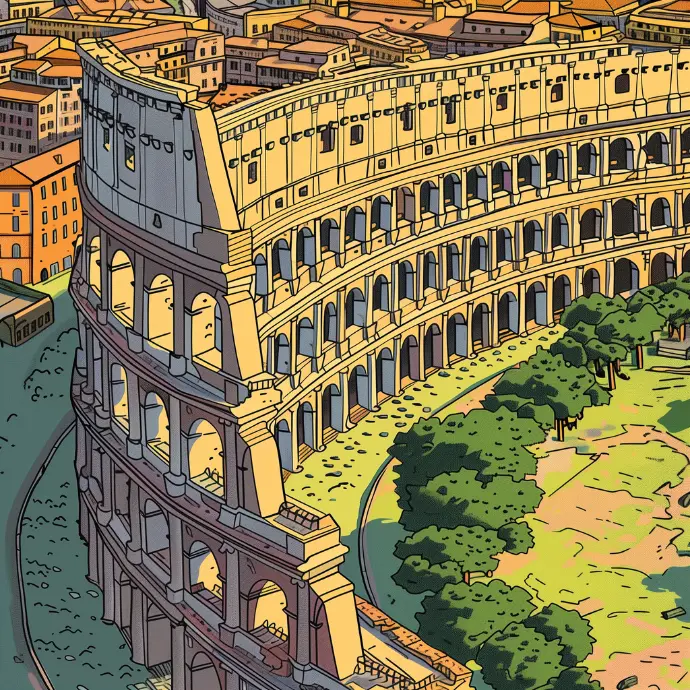The Colosseum #1

The Colosseum is one of the most iconic symbols of Imperial Rome. It was the largest amphitheater of its time and remains a powerful testament to the engineering and architectural prowess of ancient Rome. It was used for gladiatorial contests, public spectacles, animal hunts, and dramas based on classical mythology.
Name
The Colosseum
Location
Rome, Italy
Year Established
80 AD
Type
Amphitheater
Architectural Style
Ancient Roman architecture
Materials Used
Travertine limestone, tuff (volcanic rock), and brick-faced concrete
Size
Dimensions: 189 meters long, 156 meters wide, and 48 meters high
Total area: Approximately 24,000 square meters
Condition
Partially ruined due to earthquakes and stone-robbers; still impressive and well-preserved considering its age.
Design Features
Elliptical shape: Four stories with arched entrances and seating tiers
Hypogeum: Underground complex of tunnels and chambers
Velarium: Retractable awning used to provide shade
Founders
Emperor Vespasian
Emperors Titus
Emperor Domitian
Original Purpose
To host gladiatorial contests, public spectacles, animal hunts, executions, re-enactments of famous battles, and dramas.
Current Use
Major tourist attraction; hosts various cultural events and performances.
UNESCO Status
Yes
